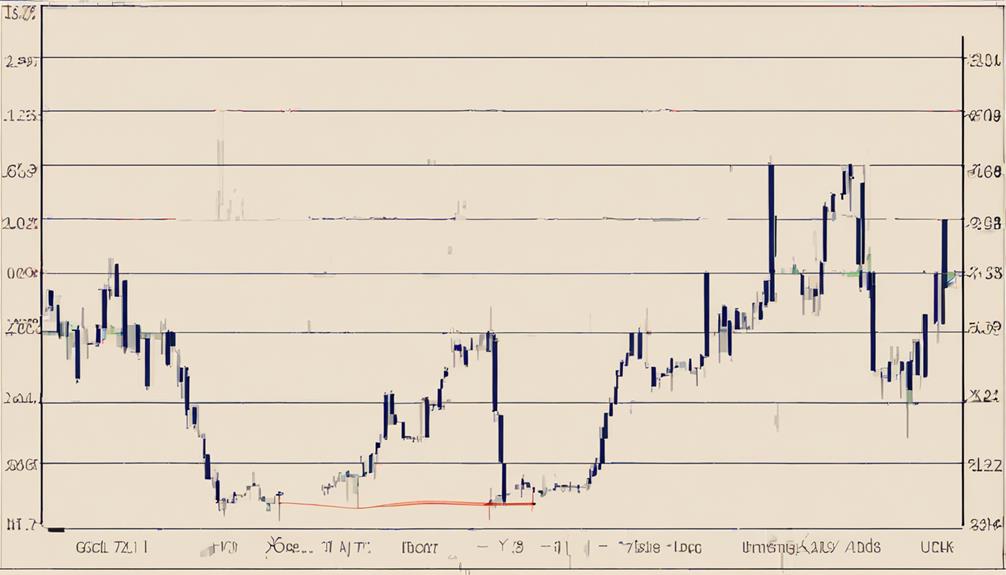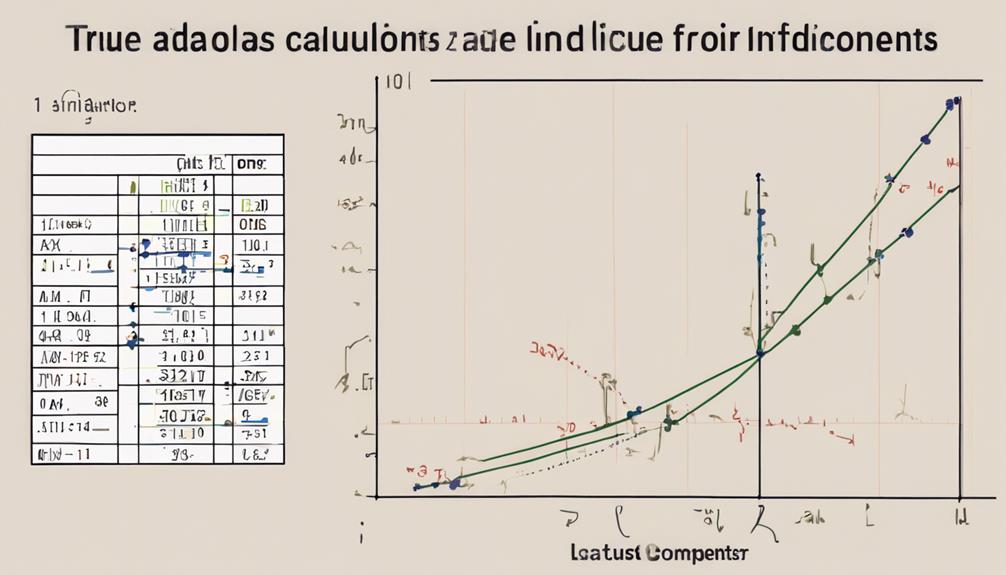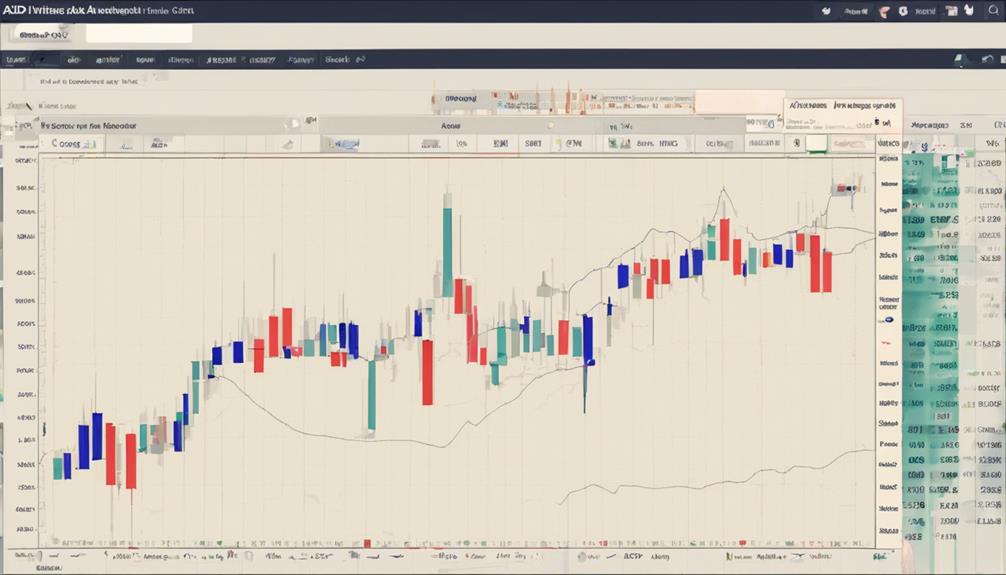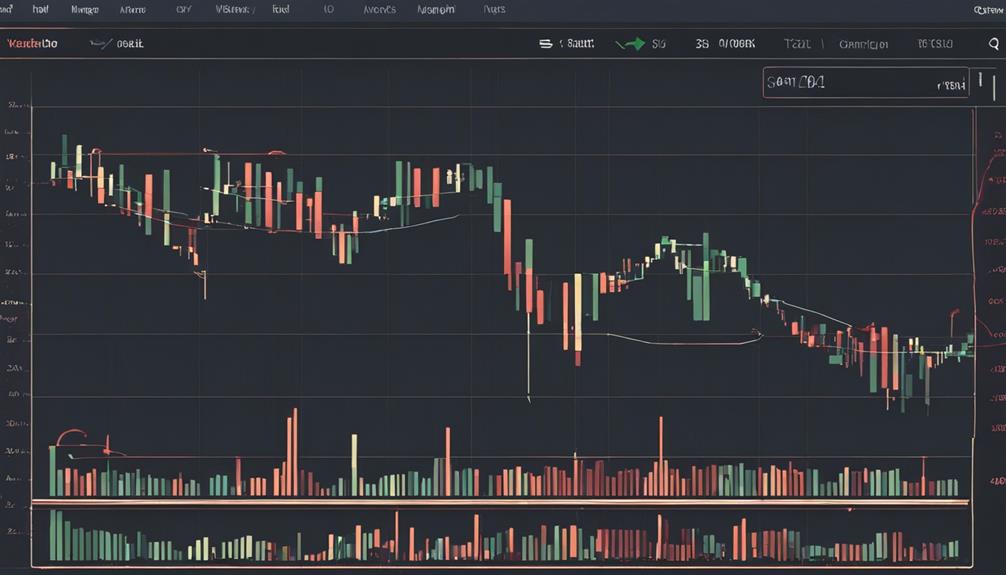Navigating the intricacies of the Average Directional Index (ADX) can significantly enhance one's trading acumen in financial markets. Understanding how to interpret ADX values and integrate them with other technical indicators is crucial for informed decision-making.
By grasping the nuances of ADX's trend strength insights and its role in confirming market moves, traders can unlock a wealth of strategic possibilities. However, the true power of ADX lies not just in its standalone application but in its synergy with other tools, promising a more comprehensive approach to navigating market trends effectively.
Understanding Average Directional Index (ADX)
Indispensable for evaluating market trends and their strength, the Average Directional Index (ADX) was developed by J. Welles Wilder in the 1970s as a pivotal tool in technical analysis across various financial instruments. ADX measures the strength of a trend rather than its direction. It ranges from 0 to 100, with higher values indicating a stronger trend. The ADX line specifically represents the strength of the trend. Alongside the ADX line, the Directional Movement Index (DMI) components, including the plus DMI and minus DMI, help assess positive and negative price movements.
Traders and analysts widely use ADX to determine the strength of a trend in the market. A rising ADX suggests a robust trend, while a falling ADX indicates a weakening trend. By utilizing ADX in conjunction with other technical indicators, traders can confirm trends, receive entry/exit signals, and identify potential reversals in trading strategies. This makes ADX a valuable tool in navigating the complexities of financial markets with a focus on trend strength and direction.
Interpreting ADX in Trading

The interpretation of the Average Directional Index (ADX) in trading plays a crucial role in assessing trend strength and potential market movements. ADX values below 20 typically indicate weak trends, while levels between 25-50 represent strong trends.
Crossovers such as the positive Directional Indicator (+DI) crossing above the negative Directional Indicator (-DI) signal bullish trends, whereas -DI crossing above +DI indicates bearish trends. When ADX crosses above 25, it suggests increasing trend strength, while a drop below 25 signifies weakening trends.
Traders often use ADX in combination with other indicators for trend confirmation, entry/exit signals, and to identify potential reversals in the market. Additionally, setting stop-loss orders based on ADX levels can help manage risk effectively during trading activities.
Calculating ADX Indicator Components

Calculating the components of the ADX indicator involves deriving values for the Average Directional Index (ADX), the Plus Directional Indicator (+DI), and the Minus Directional Indicator (-DI) to assess trend strength and direction in the market.
- The +DI measures positive price movement by comparing the current high to the previous high.
- The -DI measures negative price movement by comparing the previous low to the current low.
- ADX calculates trend strength based on the difference between +DI and -DI values.
These components collectively provide a comprehensive analysis of trend direction and strength in the market, offering traders valuable insights into potential market movements.
Using ADX With Other Indicators

To enhance market trend analysis accuracy, traders often leverage the Average Directional Index (ADX) in conjunction with various indicators. These include Moving Averages, Relative Strength Index (RSI), Bollinger Bands, MACD (Moving Average Convergence Divergence), and Stochastic Oscillator.
When combined with Moving Averages, ADX helps confirm trends by providing insights into the strength of the trend. Integrating ADX with Relative Strength Index (RSI) can further enhance trend analysis accuracy by offering a more comprehensive view of market conditions.
Additionally, using ADX alongside Bollinger Bands aids in identifying potential breakouts and trend reversals, adding a technical layer to trend analysis. Pairing ADX with MACD improves trend confirmation signals, making it a powerful combination for traders.
Moreover, integrating ADX with the Stochastic Oscillator provides a holistic approach to analyzing trend strength and momentum. By incorporating ADX with these technical indicators, traders can make more informed decisions based on a thorough analysis of market trends.
Avoiding Pitfalls With ADX

Navigating the complexities of market analysis with the Average Directional Index (ADX) requires a keen awareness of potential pitfalls that can arise when utilizing this indicator. Traders must be cautious of the following pitfalls:
- Misleading signals in choppy markets due to ADX's lagging nature.
- Lack of direction bias provided by ADX, only measuring trend strength, which can be a limitation.
- Sensitivity to the smoothing period impacting the accuracy of ADX calculations.
Additionally, market volatility plays a crucial role in influencing ADX readings, which can lead to inaccurate trend strength assessments. Using ADX in isolation without confirming signals from other indicators may result in false readings. To mitigate these pitfalls, traders should consider incorporating confirming indicators to validate ADX signals and account for its limitations.
How Can I Effectively Navigate and Master the Average Directional Index?
To become adept at mastering directional index usage, start by familiarizing yourself with the ADX indicator and its components. Understand how the ADX measures trend strength and learn to interpret its signals accurately. Practice identifying trend direction and strength using historical price charts to effectively navigate and master the Average Directional Index.
Is the Detailed Guide to Navigating Average Directional Index Necessary if I Already Have the Fast Track Guide?
Yes, the Detailed Guide to Navigating Average Directional Index is necessary even if you have the Fast Track Guide. The fast track guide gives an overview, but the detailed guide provides in-depth understanding and practical tips for using the average directional index effectively.
Frequently Asked Questions
What Are the Best Settings for the Average Directional Index?
The best settings for the Average Directional Index (ADX) depend on individual trading styles. Traders often start with the default 14-bar setting and then adjust based on market conditions and strategy preferences. Experimentation and analysis are key to finding optimal ADX settings.
How Do You Calculate the Average Directional Index?
To calculate the Average Directional Index (ADX), an investor must derive the 14-day exponential moving average of true range values, incorporate the positive and negative directional indicators, and calculate the smoothed average of the difference between these values.
How Do You Trade With ADX Indicator?
Trading with the ADX indicator involves confirming trend strength to make informed decisions. Seek ADX values above 25 for significant trends. Complement ADX with other indicators for enhanced accuracy. Consider profit-taking when ADX dips below 50.
What Is the Best ADX Setting for Day Trading?
For day trading, the best ADX setting balances signal timeliness with market noise sensitivity. Traders commonly use a 14-period setting, but may opt for a 10-period ADX for intraday analysis for quicker responses to trends while considering levels above 25 for trend confirmation.
Conclusion
In conclusion, mastering the Average Directional Index (ADX) is crucial for successful trading in financial markets. By understanding its components, interpreting trend strength, and utilizing it alongside other indicators, traders can make informed decisions and avoid common pitfalls.
Incorporating ADX into a comprehensive trading strategy is essential for navigating market volatility and achieving consistent profits. Embrace the power of ADX to elevate your trading game and stay ahead of the curve in the competitive world of finance.
